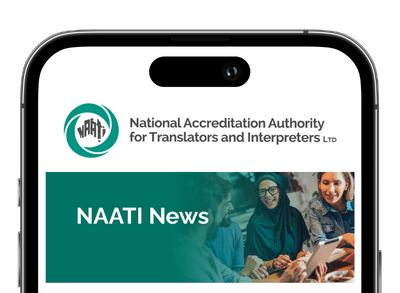August was a big month for Indigenous languages in Australia.
Firstly, the third National Indigenous Languages Report (NILR) was released, which includes the findings of the National Indigenous Languages Survey, the most comprehensive analysis of Aboriginal and Torres Strait Islander language use in Australia.
Soon after, the Federal Government announced the new National Agreement on Closing the Gap which outlined 16 new targets, the last of which seeks ‘a sustained increase in number and strength of Aboriginal and Torres Strait Islander languages being spoken by 2031.’
There is widespread hope that these events signal a greater acceptance of the central position of language in the lives of Aboriginal and Torres Strait Islander people, and a commitment to investing in the work and industries that keep languages strong.
At NAATI, we were pleased with two of the key messages from NILR:
- Indigenous language interpreters and translators support language maintenance (page 60)
- Indigenous language interpreters and translators are fundamental to good service delivery outcomes (page 73)
Interpreting is complex work. Anyone who has delved into the complexity of learning a language knows that direct translations are elusive, as there are often concepts that aren’t shared between languages. Transferring meaning from one person to another while a conversation is happening, particularly in technical contexts, requires lightning fast cognition.
Back translations help to see how navigating meaning transfer looks (and the beauty within it) – a couple of examples we’ve heard from Indigenous language interpreters recently are ‘talking straight’ as a back translation for ‘accuracy’ in Pitjantjatjara, and ‘we are people too’ as a back translation for ‘Black Lives Matter’ in Kalaw Kawaw Ya.
Interpreting can also be very high stakes. A lot of work for Indigenous language interpreters is in service provision in the health, social service, and justice areas. This means police interviews, court work, complex medical consults, child custody interviews and Centrelink disputes in desperate times. All situations with specialised language, concepts, and systems; where interactions are often emotionally charged and involve power imbalances, cultural obligations and community politics.
Often there is a misconception that someone who is bilingual can interpret, and bilingual people are engaged to interpret without any training or support. In Indigenous communities this happens often, either because people wanting to engage an interpreter don’t understand the role of an interpreter, or they are unable to access a trained interpreter. This means that often family or community members are asked to play the role of interpreter, knowing that if they don’t help, no one will.
The reality is that being bilingual should be a prerequisite for beginning to train as an interpreter, not work as one. Interpreter training involves developing and practicing the skills to interpret accurately and objectively, as well as learning about the Code of Ethics that govern the interpreting profession and protect interpreters by articulating their role clearly.
In Australia, NAATI certification is a guarantee that an interpreter has the training and skills needed to practice as an interpreter in Australia, and assures professionals and Indigenous language speakers that the interpreting will be to a high standard. Professionals have a duty of care to ensure their services are delivered equitably. Indigenous language speakers requiring an interpreter want to feel safe accessing services they have a right to access.
NAATI certification is particularly important for Indigenous language interpreters themselves. Interpreters feel pride that their profession is recognised as highly skilled and that they have met standards shared across all languages. By understanding and operating within the Code of Ethics, they can maintain professional boundaries that don’t put their welfare at risk. Certification can also contribute to career development of interpreters through increased pay and more work.
Increasing the number of certified Indigenous language interpreters, and the number of languages that have certified practitioners is the main objective of NAATI’s Indigenous Interpreting Project.
There are some challenges to achieving these goals, including a shortage of upcoming translators and interpreters in many areas and language groups, a lack of awareness about the need to engage highly skilled translators and interpreters and the difficulty many practising Indigenous language professionals face in accessing relevant training.
The goal is simple, achieving it is complex, but the impact is large. Our theory is that increasing the number of certified Indigenous language interpreters will support Aboriginal and Torres Strait Islander language maintenance, build the careers of Aboriginal and Torres Strait Islander language speakers, and improve communication between Language speakers and others.
Given the findings of the NILR released last week, and the new Closing the Gap language target, the evidence to support this theory is mounting.
Written by Hannah Bryant, Manager of NAATI’s Indigenous Interpreting Project.
NAATI’s current focus for Indigenous languages is interpreting because the need for certified interpreters is more immediate. Whilst quality translations are also a crucial part of communication and language maintenance, they allow for more time and teamwork to ensure their quality.
